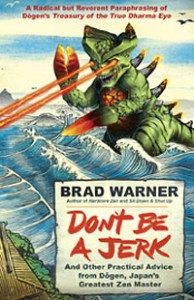Loving On Me
This is an excerpt from the book “Loving on Me!: Lessons Learned on the Journey from Mess to Message,” by Katrina McGhee.
One of the great benefits of dealing with the unaddressed issues of our past is that it clears up mental space in the present. It allows the whole of ourselves to focus on what’s before us, viewing life through a broader lens of possibility rather than pessimism, confusion, and defeat. It’s from this vantage point that we are best poised to explore life beyond our comfort zone.
After a few months of rest and reflection, I felt that shift happen for me. It was as if the fog surrounding my brain slowly began to recede, allowing my mind to fill with random thoughts and ideas. I couldn’t put it all together yet, but it felt like glimpses of the future.
Looking back, I see how God was taking me through a process of reshaping my thinking before he’d allow me to take those first steps. Bit by bit, spending time with Him evolved my beliefs about who I am and who He is. Knowing my true self, defining my worth based on who He created me to be, and accepting this one truth greatly expanded the prospects for my life:
I am because He is, and because He is, anything is possible.
Believing this meant I didn’t have to be confined by what I had been or knew how to do. I could be whoever He wanted me to be, and I could know that whatever He asked me to do, it would be enough. But what was it?
Journaling was the best way for me to get quiet enough to hear God’s answers. Through daily writing, I was able to slow down my constantly racing thoughts and drop into a space where it was He and me alone. It was there where my imagination took flight in a more cohesive manner.
Soon a cornucopia of ideas—both new and dusted-off old ones—emerged. My transition coach called it a creative tornado, but for me it felt like I was finally alive again, awake and ready to reengage with the world. What got me especially excited was a concept for a new women’s community. I referred to it as Do Good Girlz, a place where young women could connect their passion with their true purpose.
My idea was to get someone to write a program that would serve as the “brain” for our website, the goal being to use technology to match a woman’s unique gifts, talents, values, and resources with a variety of causes and organizations that, based on her responses, would be of interest. After completing our survey, each “Do Good Girl” would receive a unique plan to put her passions into action, and together we would change the world.
It sounded so wonderful, marrying all my loves—mentoring young women, creating communities, and supporting great causes. It also met a need. For years, young women had been asking me, “How do I know what I’m supposed to be doing? How do I take what I’m good at and help other people?” Well, here was the solution! Do Good Girlz would revolutionize the way women engaged in supporting local and global communities.
The best part was this was a natural next step for what I had been doing all my life, what I was good at. So I started getting all my ducks in a row. I secured the website, graphic designer, and a project manager. I even put together a small focus group and started meeting with them regularly to test out my ideas.
There was just one problem—they didn’t get it. What seemed so obvious on paper fell flat in the telling. They kept asking me hard questions like, “What’s the goal? What are you trying to achieve? Why would women engage, and why would they come back after the first time?” My answer was always, “Let me think about that.” What I really wanted to say was, “Look, this is an inspiration from God. Just go with it!”
But my gut was telling me they were right. There was something missing. It felt incomplete, like I had snatched up a piece and tried to make it the whole picture. You know how we do, so eager to get started we hear a smidgen of something and then take off running like we know the whole story, only to have to stop a few steps later to get the rest of what we need.
That’s what I ended up doing, going back to the journal to ask God what I was missing. And that’s when He started showering me with additional pieces to the puzzle.
It’s a movement, about women for women. It’s built on the spirit of abundance. It’s a partnership and a platform.
It’s where inspiration meets opportunity. It’s about choices that change our world. It’s a blog. It’s a business. It’s a community. It’s a place of healing and restoration.
Honestly, I felt a little all over the place and yet still on the right path. Although “it” didn’t completely sync up with my original idea for Do Good Girlz, it totally lined up with this leg of my journey. Even the affirmations I scribbled in the margins of my journal were reflections of what God was teaching me about me.
I can change the world. I was created for a unique purpose, something only I can do. I care about myself, my village, and my world. I am mighty. I am strong. I am enough. I choose to do good!
It seemed this message of being enough, which was so central to my own healing, was at the core of what God was asking me to share with the world. Whereas I had latched on to the “do” part, God backed me up once again to “be.”
About the author
Katrina McGhee is the founder and CEO of Loving On Me, a global movement to encourage women to love themselves more. She is a women’s advocate, non-profit leader, mentor and social responsibility pioneer whose desire to make a difference led to 20 years in leadership roles at two of the largest non-profit organizations in the world, including serving as executive vice president and chief marketing officer for Susan G. Komen for the Cure. For more information about Katrina, visit http://katrinamcghee.com.











 Brad Warner is the author of Don’t Be a Jerk and numerous other titles including Sit Down & Shut Up, Hardcore Zen, and Zen Wrapped in Karma Dipped in Chocolate. A Soto Zen priest, he is a punk bassist, filmmaker, Japanese-monster-movie marketer, and popular blogger based in Los Angeles. Visit him online at
Brad Warner is the author of Don’t Be a Jerk and numerous other titles including Sit Down & Shut Up, Hardcore Zen, and Zen Wrapped in Karma Dipped in Chocolate. A Soto Zen priest, he is a punk bassist, filmmaker, Japanese-monster-movie marketer, and popular blogger based in Los Angeles. Visit him online at